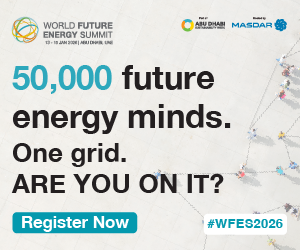Search - Search on Articles, Blogs & Tags
Total Results : 223
Preparing electric utility operators for the effects of climate change
- 2023-09-20 18:30:53
- Junior Isles
Many electric utility operators are already taking measures to establish resilient networks capable of withstanding the impacts of climate change. Research indicates that every dollar invested in building resilient infrastructure saves six dollars in future repair costs, making it a beneficial long-term investment. So what are the key steps utilities can take?
Adrian McNulty, VP Utility Solutions, IQGeo
Nigeria power grid collapses again
- 2023-09-20 07:40:20.366657
- David Flin
Nigeria is in the grip and another widespread blackout as the country’s power grid collapsed catastrophically for the third time in five days.
Nigeria restoring power after nationwide blackouts
- 2023-09-15 07:07:26.754596
- David Flin
Nigeria’s electricity distribution companies reported “a total system collapse” on 14 September as a result of a fire on a major transmission line.
Hitachi Energy to supply technology for UK’s longest HVDC link
- 2023-09-11 06:42:51.184524
- David Flin
Hitachi Energy has been selected by SSEN Transmission and National Grid to supply two HVDC converter stations to interconnect the Scottish and English power grids.
Grid inadequacy makes renewable growth futile
- 2023-09-08 16:01:12
- Junior Isles
A rise in renewable energy is futile if our grids can’t keep pace with the growth.
By Frédéric Godemel, EVP Power Systems and Services at Schneider Electric
African Development Fund to support Mauritania-Mali power line
- 2023-07-21 07:19:33.935643
- David Flin
The African Development Bank (AfDB), along with other partners, has committed to funding a $900 million multinational power transmission line between Mauritania and Mali. https://www.afdb.org/en
Power transmission line in South Korea to be commissioned later this year
- 2023-07-14 07:27:51.339478
- David Flin
The underground Buk Dangjin-Godeok HVDC transmission line to carry electricity generated along the west coast of South Chungcheong Province to the Seoul metropolitan area will open by the end of 2023.
Queensland to set up renewable energy zones as part of $62 billion super-grid plan
- 2023-07-11 07:26:43.434103
- David Flin
The Queensland government has identified 12 renewable energy zones across the Australian state that will underpin its $62 billion plan to decarbonise its electricity supply.
UK’s National Grid and SSEN in JV for 2 GW electricity transmission project
- 2023-07-05 06:45:59.420405
- David Flin
Scottish and Southern Energy Networks (SSEN) has announced that it has signed a joint venture agreement with Britain’s National Grid Electricity Transmission (NGET) to build a 2 GW subsea cable linking northern Scotland to England.
Eskom could be unbundled by December
- 2023-06-12 07:17:03.369351
- David Flin
South Africa’s Department of Public Enterprises has announced that the country’s first dedicated power transmission company could be unbundled from Eskom by the end of 2023, allowing IPPs to compete directly with Eskom.


